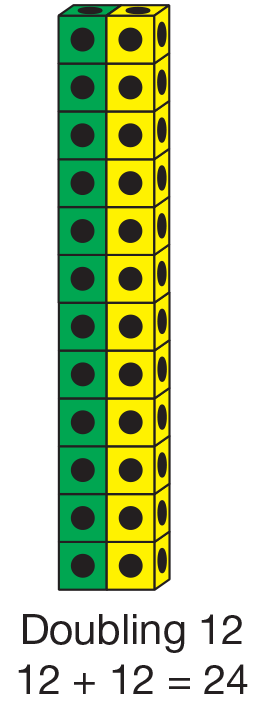Students create visual representations of doubling a number then create a table of doubles. The class brainstorms a list of familiar items that come in pairs then think of doubles number sentences to reflect their examples.
Content in this Lesson
- Representing and identifying even and odd numbers.
- Representing doubles using counters, pictures, and number sentences [E1].
- Finding objects that come in pairs.
- Representing addition situations using stories, drawings, counters, or number sentences [E2].
- Showing work in pictures and in writing [MPE5].
Assessment in this Lesson
| ASSESSMENT | EXPECTATION ASSESSED | MATH PRACTICES EXPECTATION ASSESSED |
|---|---|---|
|
Doubles Problems Student Activity Book Pages 367–368 |
|
|















